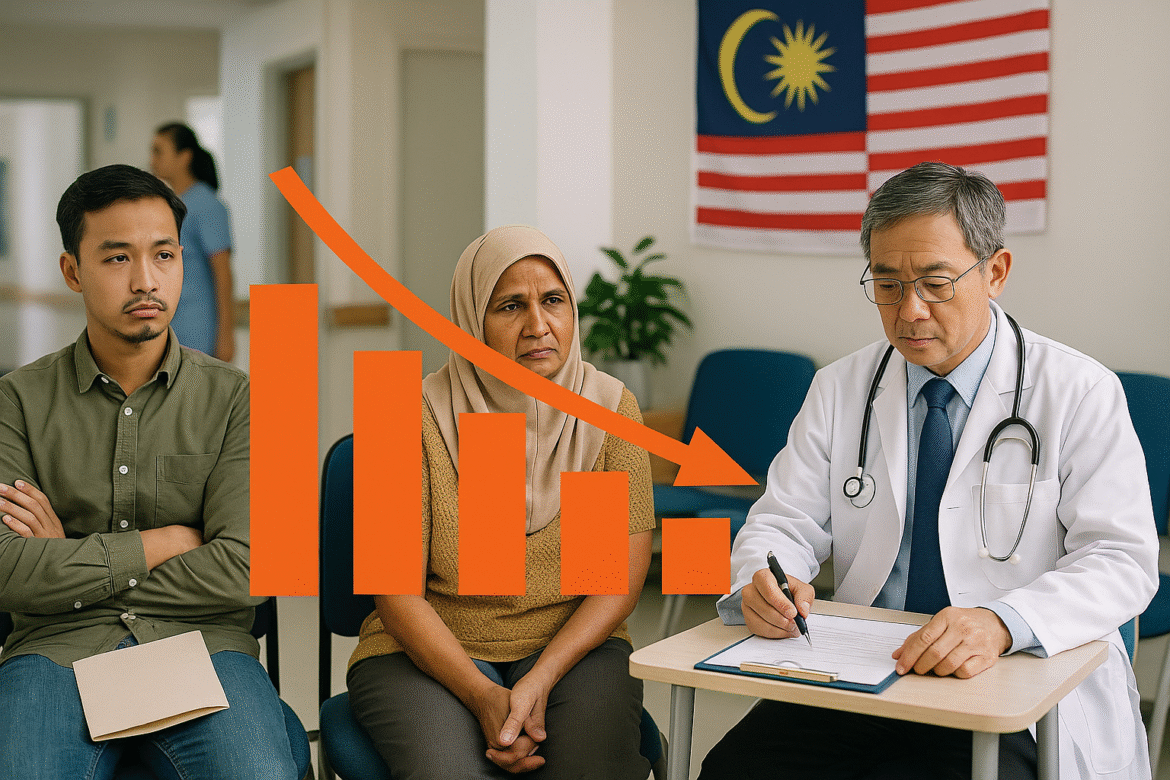Malaysia’s public health system has been generally praised in the past for the accessibility and affordability of its healthcare services to its people. However, as populations grow and with rising healthcare demands, the fiscal cost analysis of maintaining and upgrading such a system is now a serious concern. Policymakers are also being challenged with ever-greater long-term concern regarding continuing the existing healthcare system while ensuring quality service and fiscal viability in the centuries ahead. The expansion of public healthcare in Malaysia brings clear social benefits, but the cost pressure is mounting and requires careful planning.
The Growing Demand for Public Healthcare
One of the most significant factors contributing to the increase in costs is the increase in demand for healthcare services. Malaysia is continuously aging, and non-communicable diseases such as diabetes, cardiovascular disease, and cancer are increasingly on the rise. Chronic diseases are conditions that take a long time to correct and hence require long-term treatment, medication, and follow-ups, creating a gigantic load on government facilities.
With more patients utilizing public clinics and hospitals, infrastructure needs are also rising. More beds, more staff, and more equipment are required. An elaborative fiscal cost analysis indicates that spending on public healthcare in Malaysia will further escalate if service levels remain the same or if service levels need to be improved. This trend is undesirable in the context of budgetary distribution, especially because other public services such as education, housing, and transport also have to be paid for.
Funding Sources and Budget Allocation
Public healthcare in Malaysia is supported today primarily through the federal government’s annual budgets. But Malaysia spends only about 4% of its GDP on healthcare, less than many developed nations. In an effort to keep up with growing demand, experts argue that more money has to be spent on health in the next decade. This creates a tough policy dilemma: Where will the added money come from?
Implementing a financial cost analysis of other funding options presents potential solutions in the form of tax increases, compulsory health insurance, or increased public-private partnerships. Each has its strengths and weaknesses. Tax increases may be unpopular, but insurance arrangements may create inequality. Yet, if nothing changes, the public system might be put under pressure that harms quality and access.
Furthermore, continued investments in healthcare technology, digitization of patient records, and expansion of telemedicine services are also additive to the costs. Although these initiatives drive long-term efficiencies, their up-front cost must be wisely factored into any cost-benefit analysis.

The Long-Term Fiscal Cost Expansion of Public Healthcare in Malaysia
Human Resource and Infrastructure Expansion
Another segment of the fiscal cost analysis is the cost of hiring and retaining qualified health professionals. Doctors, nurses, and specialists are in high demand, but paying competitive salaries and benefits becomes increasingly difficult in public budget considerations. Brain drain, where domestic professionals emigrate abroad to find better-paying jobs, further increases the pressure on investing more in training programs and retention programs.
Expenditure on infrastructure is also on the rise. New hospitals, better equipment, and advanced diagnostic facilities are necessary to match modern healthcare standards. A case in point is the plans of the government to build or upgrade several government hospitals by 2030 that will cost billions of ringgit. These projects are necessary to upgrade public healthcare in Malaysia, but the expense is long term and accumulates.
The Role of Preventive Healthcare and Policy Reform
Preventive care has been estimated to be an economical way of reducing the long-term financial impact. Promoting healthier living, early diagnosis, and healthcare at the community level can reduce hospitalization and treatment expenses in the long term. A particular fiscal cost analysis shows that one ringgit invested in prevention saves several ringgits in the form of treatment costs.
Besides, restructuring subsidies to distribute resources more economically can help alleviate the cost burden. For example, it can be encouraged for well-off patients who have the means to use private facilities, and subsidies are offered for poor and needy people. In this manner, Malaysian public healthcare can be sustainable while at the same time offering help to those most in need.
A rising demand for public healthcare in Malaysia is fueling an imperative need for smart fiscal cost analysis to maintain system quality and sustainability.
Why Economic Inequality in Nigeria is Widens Post-Pandemic and Globally
The Global Shift Toward Trade Agreements in France and Facilitation



